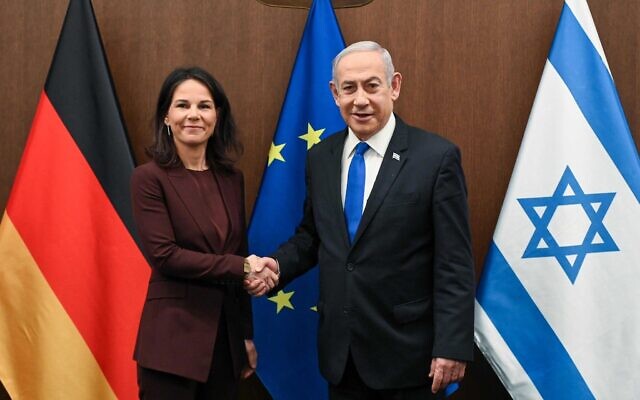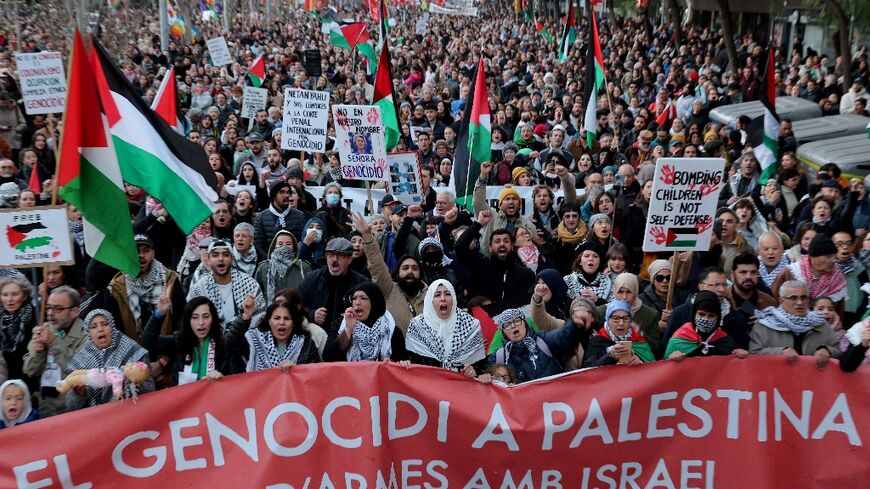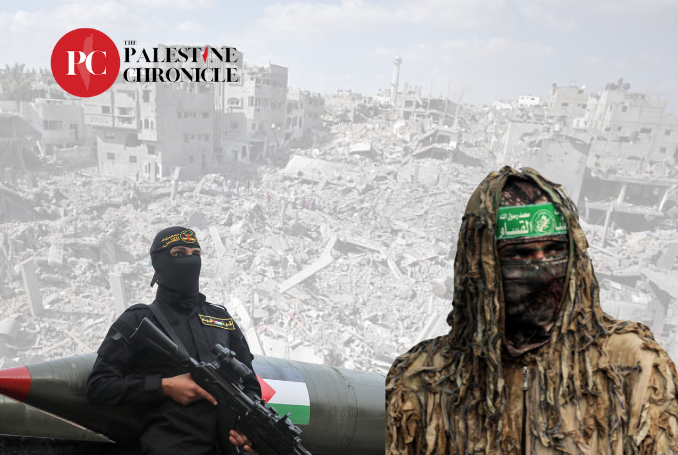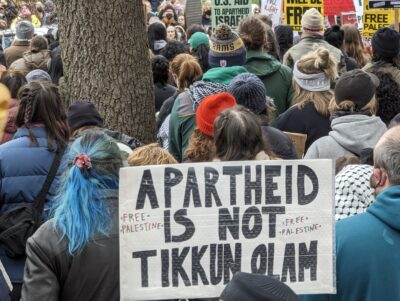
The mainstream media has finally decided that Israel did bomb Syria’s Latakia weapons depot five days after I first reported this. My post was written on July 7th, one day after the incident. Yesterday, CNN was the first MSM outlet to report, based on anonymous Pentagon sources, that Israel was the culprit. Barbara Starr, who wrote the piece, never credited the original publication which reported this fact, Tikun Olam. Amos Harel wrote a story for Haaretz in which he claimed the Latakia attack “has largely flown under the radar.” Which is nonsense, because it discounts my own reporting which, of course, he didn’t credit. The NY Times’ Michael Gordon essentially regurgitated the CNN report. He didn’t bother to note my work on the story either.
E-mail messages and tweets to Starr, Harel, Gordon, and Aluf Benn, Haaretz’s editor, have remained unanswered. In a way, I’m not surprised by Haaretz since virtually no Israeli media outlets credit the reporting of others outside their own shop. But I am a bit surprised by the sloppiness of the Times and CNN.
By the way, numerous other media outlets were offered this story including the BBC, among others. None was interested. So you have to ask yourself whether these MSM journalists are doing their jobs. Why does it require a gold-plated press pass to be taken seriously? Finally, this should be a lesson to anyone seriously interested in following world events–that the MSM offer half the story, if that. You need to cultivate alternate sources of information. And if you’re in the MSM you can’t do your job as you should if you ignore, belittle or disrespect us, as most of you invariably do.
Israel is reportedly angry with the U.S. for spilling the beans on Israel’s role in the bombing. Which seems a bit chutzpadik: Israel decided to invade Syria’s sovereignty to obliterate defensive weapons and doesn’t want to pay the price. Nice.
A reporter whose work I generally greatly respect, Alex Fishman, has the gall, in today’s Yediot, to take the U.S. to task, claiming it’s an “untrustworthy ally” because Pentagon officials “sold” Israeli military secrets “cheaply” to the U.S. media. In doing so, we supposedly knew full well that it endangered Israel’s “regional interests” and the lives of Israelis. Excuse me fella, but you’ve got it backwards: Israel chose to endanger those lives when it attacked the weapons depot. The fault is not with any Pentagon leaker, but with Israeli policy. If it wants to bomb, then take responsibility for it instead of hiding behind a bunch of ragtag Syrian rebels.
Israel believes that it can get away with whatever it likes in the Middle East and that enemies like Assad are so afraid of Israel that if only it doesn’t rub the insult in, that he’ll overlook Israel’s aggression and flagrant violation of its sovereignty. Thus, Americans are nasty spoil-sports to violate that rule of secrecy.
Another factor Fishman discounts is that this story, first reported by me, derived from an Israeli source, not an American one. Which means there are Israelis who believe the public should know these facts. So Mr. Fishman, don’t point the finger at us–look in the mirror. My reporting of the story proves that such secrecy and opacity, the hallmark of Israel’s national security state, is outmoded and ineffective.
Finally, Rodney Dangerfield was right: you just can’t get any respect unless you’re one of the select establishment few. But beating them all to the story does have its satisfactions.
Related articles








According to the British newspaper The Sunday Times, the target was a consignment of 50 Russian-made Yakhont P-800 anti-ship missiles delivered to President Bashar Assad’s armed forces this year. The strike was actually carried out by an Israeli Dolphin class submarine which fired a cruise missile from the sea. [source YnetNews]
Jerusalem Post covered the CNN story – US Official: Israel Launched Airstrike in Syria Last Week.
The attack on Latakia, for which there was no claim of responsibility, was the work of the Israel Air Force, the officials said. [erroneously claims attack by IAF – Oui]
My first comment is awaiting moderation because of a 3rd url, so I made this new post.
CNN page which was first US media to report attack has been pulled:
http://www.cnn.com/2013/07/12/politics/israel-syria-strike/index.html
@Oui: This is the link I used. It works: http://security.blogs.cnn.com/2013/07/12/israel-believed-behind-recent-syria-strike/
Thank you. I appreciate your excellent reporting!
Greatest surprise the Kremlin has remained silent on the Israeli attack, this is not what can be expected of Vladimir Putin. Possible complexity of Snowden overstaying his hospitality at Moscow’s Sheremetyevo International Airport. Perhaps, since previous Israeli attack, the Assad regime has taken the initiative and done quite well, conquered Qusayr and laying siege to Homs and Aleppo. The rebel forces now killing each other’s commanders is also welcomed by Damascus.
The RT readers are quite vocal on a copied CNN story – link.
I think it’s best that Russia would wait with the supply of the s-300 to Assad, unless of course Assad pays in advance and there are no guarantees that the s-300 would stay intact in Syria for more than 30 seconds 🙂
“Amos Harel wrote a story for Haaretz in which he claimed the Latakia attack “has largely flown under the radar.”
Which is nonsense, because it discounts my own reporting which, of course, he didn’t credit.”
Richard, I think Amos Harel had you in mind when he wrote “has largely flown under the radar” so it is not nonsense at all and it does not discount your reporting. Also I am not sure that from Amos Harel’s perspective you should have gotten any credit for a scoop – that is if the Israeli reporters had the story when you had it or before but were bound by the Israeli censors from publishing it.
@Itai: Harel credited sources like CNN for the story, who weren’t the first to report it. If he had the story first, why did he even bother to credit CNN? No, sorry it’s an insular guild. If you’re a member you’re cool, if not, you’re chopped liver.
In journalism, credit goes (or should go) to the one who reports it, that is, publishes it first. If I have a story and choose not to report it I deserve no credit.
Ok. Let us know if they Harel, Benn come back to you with
answers
Richard, the scoop here is not that Israel attacked Syria. Israel gets blamed for attacking neighboring countries all the time. The scoop is that some unnamed US officials confirmed it, and CNN did that, not you.
Reuters news item released much earlier:
Syria naval base blast points to Israeli raid
BEIRUT | Tue Jul 9, 2013 3:13pm EDT
“A former senior Israeli security official, who declined to be named, told Reuters that the area of Latakia in question was known to have been used to store Yakhont missiles.”
Israel now blaming three unnamed US officials?
@Oui: As soon as I read this story, I queried my source who said the target had been Yakhonts, rather than SA-300s.
@Matan: And you’re an idiot who doesn’t even make any sense. Israel attacks other countries with great frequency and when it does so this is indeed important news.
It’s why idiots like you come to this site to talk trash as you do because your goal is to obfuscate & devalue my contribution to the debate.
RT.com released a news broadcast with brief interview Haaretz reporter Amir Oren:
Israel behind mystery attack on Syrian port – US sources
From the satellite image, it doesn’t look like they hit anything explosive, though. If they hit a missile store, there should have been secondary explosions, and it is clear there were not. Anti-ship missiles would need quite a large explosive warhead. However only the roof has been knocked off, and the interior burnt out, while the walls are standing in good condition.
Maybe they hit the wrong building.
Or maybe the buildings contained sub-systems of the
missile, like its radar, or launch vehicles and the missiles are
stored elsewhere.
Note the change in appearance of surrounding structures due
to disappearance of vegetation. Indeed, some things are now exposed
which were nearly hidden before the attack. (One of several good
reasons for always having a good look after you’ve bombed
something, because you can see what other objects you might have
missed.) Concrete roof completely removed from large structure,
too, rather than being holed and collapsed. The surrounding
structures are clearly very tough, but it’s also clear that there
was blast and heat. The Dolphin class have some 26″ torpedo tubes,
because the US refused to supply Tomahawk missiles capable of being
fired through standard 21″ tubes. These can be used for a variety
of mines and torpedoes in theory, though in practice it’s almost
certainly for a variant of the Popeye missile substituting for a
Tomahawk. http://en.wikipedia.org/wiki/Popeye_%28missile%29 This
allegedly exists in nuclear and conventional forms, though some of
the performance figures seem like hype to me, borne out of
frustration of not getting Tomahawks. There is much more damage to
the main structure than could have been caused by one conventional
Popeye, and multiple hits would have left things looking less tidy.
I think the big structure must have been contained some fairly
large munitions and was struck by a single Popeye, which caused the
secondary explosions you don’t think happened, blowing the roof
off, incinerating vegetation which had been screening nearby
structures, and shifting soil. Based on other places where the
Syrians store munitions, the big structure would have had a
concrete roof, one to three feet thick, and with blast walls not
quite reaching the roof, in order to vent heat from propellent
fires and such so as not to risk detonation of warheads. In this
case, with quite a large munition causing the initial explosion,
this arrangement didn’t prevent a big secondary explosion, but it
probably did send that explosion mostly upwards, along with the
roof. Had the roof been the fifteen to thirty feet of
ferro-concrete and other materials seen on Nazi installations of
similar purpose, the Popeye might not have succeeded, but if it
had, the secondary would have turned the whole site into hole. I
think the secondary explosion would have involved a lot of missile
fuel as much as warheads. The warheads might have been in one of
the other structures, in fact. The one that looks slightly curved,
“above” the main structure, could contain either warheads or (more
probably) guidance systems needing calibration and commissioning
work. (The internal logic of these sites hasn’t changed a lot from
Northern France in the summer and autumn of 1944.) Popeyes can be
launched from aircraft flying offshore as easily as submarines, the
reason for using the latter would be to demonstrate a capability to
hit similar installations a lot further away from Israeli
airfields.
The P800 missile reportedly has a 300KG warhead, which is a
baby by the standards of some Soviet anti-ship missiles. It’s a
very high speed missile, however, and I expect that most of the
300KG will be metal rather than explosive. There’s a soild fuel
booster and a ramjet sustainer motor, so lots of fuel, both
self-oxidising and otherwise. It would have been good practice not
to have the warheads fitted unless the weapons were about to be
deployed for launch, but I’ve met Arab armourers before so I’m not
betting on this. Likewise, it’d be good practice not to have the
liquid ramjet fuel loaded. (Depending on what it is, it can be
volatile and toxic as well as flammable.) I think they almost
certainly hit the missiles, which are quite big things, which I
can’t really visualize in numbers in the smaller structures. At
least one of which should be a survival structure for the personnel
on the site.
Though *we* have much respect for you, corporate media will never offer it.
I also have much personal respect for you, which is why I commented when you first broke the story, that it might be time to better vet your sources. I was just headed back there, to finally follow up, on my remarks. I was waiting for *this.*
[I have never heard of an entire fleet of anything being *grounded,* for one silly malfunction. Personally, I wonder if they are bidden hidden , for reasons of safety.
Though *we* have much respect for you, corporate media will never offer it.
I also have much personal respect for you, which is why I commented when you first broke the story, that it might be time to better vet your sources. I was just headed back there, to finally follow up, on my remarks. I was waiting for *this.*
[I have never heard of an entire fleet of anything being *grounded,* for one silly malfunction. Personally, I wonder if they are bidden hidden , for reasons of safety.]
http://www.syrianews.cc/syria-foils-infiltration-attempt-addumayr/
This is the correct url .
http://www.syrianews.cc/syria-attack-latakia-5-july-2013/
Explosions in Latakia: Before and After
Israel Defense: anlysis of the satellite photography
According to several Syrian opposition websites, the attack took place in the area of the village of Samiyah on the way from the port city of Latakia to Al Haffah – where a military complex containing a network of 20 bunkers and an isolated area with a warehouse stretching across 80 meters is located.
Intelligence researcher Ronen Solomon obtained satellite photography of the same area, and an examination of the satellite photography and comparison to the photos taken before the supposed date of the attack yields several findings.
“Intelligence researcher Ronen Solomon obtained satellite photography”…..
Hmmm, the pictures do seem to show at least six bunkers were taken out as well as that large building, which might tend to rule out a submarine-launched strike, since the Dolphin-class have only four tubes capable of launching popeye cruise missiles.
Richad, correct me if i’m wrong: you first reported that
“The target were components of Russia’s SA-300 anti-aircraft
missile system which had been shipped by Russia to Tartous and
stored in Latakia” and only in Update I (which aired when ?) you
stated that your source now claims it the target was Yakhonts
(after other media outlets made that claim) I think that the
variations in the information you publish (according to the
information relayed to you by your source) makes your reporting
looks like speculation and not a substantive report based on
information. In my opinion, that is the reason you do not get
credit for said story.
@EladR: Sorry, doesn’t hold water. I reported that Israel attacked Latakia, which was true. I also reported that Israeli coordinated with the FSA, which no other outlet reported. True as well.
What the target of the attack was is important, but secondary. It’s even possible that my source & those who carried out the attack believed there were SA-300 components at the depot and the IAF found they were Yakhonts instead.
How did you know that Israel did that? Do you have sources
in the Israeli Army or did you make an educated guess? Thanks for
your blog!
The post says that I have a confidential Israeli source.
Richard, I’d like to know why are you sure that all the
reporters that you’ve mentioned above read your blog and aware of
the fact that you are the first to come with this story , so they
have to credit you when they review it ? Furthermore , you have to
consider that maybe those reporters have been waiting for a
creditable source to confirm this story before they come out with
it in a major media in Israel.
It’s the job of a reporter to do research for his or her stories. Any simple Google search about the Latakia bombing would bring up my post. If a reporter can’t be bothered to do such research they shouldn’t be a reporter. Not to mention that I believe I emailed Aluf Benn with the link to my story.
And as for “creditable” sources (by which I think you meant “credible”), I AM a credible source. Working for the NYT or CNN does not make you any more credible than I am. In fact, because I report stories they won’t or can’t in some ways I have MORE credibility than they do.
@ Richard,
although we have our many differences i do believe that where credit is due you should give it – so top of the hat to you Richard – and i hope you’ll get the proper credit from MSM as well.
Noam
@Noam: Thanks, I appreciate those words.
Richard — you were all over this well before MSM. Thanks.
Like Noam above, I have to admit that I frequently do not agree with your reporting. You should know, however, that one Israeli media source did acknowledge your reporting on the Latakia attack – Ehud Yaari quoted you on Channel 2 news last Sunday night (a week ago). He then went on, however, to say that your site is generally unreliable and that your report should be ignored. I haven’t heard him since, so I don’t know if he has rescinded this comment.
@Edmund: I wrote to Yaari challenging him to discuss my ideas & take them seriously instead of engaging in ambush journalism of this sort. Guess what? I never heard back from him. He’s a perfect example of what I was criticizing in the MSM.
See my earlier post with link – Israel Defense: analysis of the satellite photography.
“A large cargo terminal of sorts was constructed at the entrance to the ammunition complex in the past two years, from which convoys of vehicles have arrived and departed, as can be seen on the photography from July 7. From an analysis of the satellite photography from the past few years and from the recent period, it seems that the terminal itself, near the main road, was not hit.
The main damage is visible in the photo of the warehouse that collapsed inwards after being hit, and vehicles can be seen in the July 7 photo, including a crane, apparently carrying out evacuation activities. Several bunkers that were hit can be discerned in another photo.”
These satellite photo’s showed the impact of multiple strikes: a large depot and up to 5 or 6 additional bunkers/buildings.
I have searched Google maps for the exact location near village of Samiyah (route from Latikia to Al Haffah). Have been unable to pin-point this area. The researcher Ronen Solomon kept open the possibility of another target north of Latikia. This would be the target you wrote about in first article.
“An additional report referred to a strike in the area of the Syrian naval base north of Latakia, which is used for deploying two Bastion batteries used to launch Yakhont missiles, and it is possible that they were also an attack objective.”
“I have searched Google maps for the exact location near village of Samiyah (route from Latikia to Al Haffah). Have been unable to pin-point this area. ” Google is probably showing you the images from 2003, because those photos have the least cloud cover. But that predates the construction of that side. Move the slider to 2012, and then follow the highway from Al Haffah towards Latikia; you’ll see the bunkers just on the “Al Haffah side” of half-way.
It’s here: 35°33’52.60″N 35°56’15.57″E Doesn’t appear on
the 2003 image, which is the default display. First appearance is
12/31/2004, along with the bunkers. The larger “cargo terminal”
north of the bombed site (the one mentioned as being untouched by
the raid) still isn’t there in the 10/05/2011 image, but you can
see that the site was being levelled and work was
beginning.